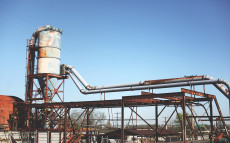- pathfindersAI
- Job Profile
Fabric and Apparel Patternmakers
Summary
Fabric and Apparel Patternmakers: Crafting the Blueprint of Fashion
What They Do
Fabric and Apparel Patternmakers are the architects of the fashion world, bringing designers' visions to life through precise and meticulous design blueprints. These professionals deftly translate creative concepts into technical patterns, which serve as the foundation for constructing garments and accessories. Their work envelops both artistry and technical acumen, providing the essential templates that guide the manufacturing process in the apparel industry.
Job Responsibilities
The primary responsibilities of Fabric and Apparel Patternmakers involve drafting and developing patterns for clothing and fabric products. This begins with interpreting sketches and specifications from fashion designers to ascertain the elements and dimensions required for each pattern piece. Utilizing both traditional hand-drawing techniques and modern computer-aided design (CAD) software, patternmakers create initial layouts and adjust patterns to optimize fabric usage and garment fit. They are also responsible for creating, altering, and grading patterns to various sizes, ensuring consistency and precision across all dimensions. Additionally, these experts collaborate closely with design and production teams to resolve any discrepancies in patterns and oversee sample production to ensure accuracy before mass manufacturing begins.
Essential Skills
To excel as a Fabric and Apparel Patternmaker, a blend of artistic talent and technical expertise is critical. Precision and attention to detail are indispensable, as even the slightest miscalculation can disrupt the entire production process. Proficiency in CAD software is increasingly necessary, as it enhances accuracy and efficiency in pattern creation. Furthermore, a strong understanding of textiles, garment construction techniques, and the principles of fit and design are essential. Effective communication skills are also paramount, as patternmakers must articulate their ideas and collaborate seamlessly with designers and other industry professionals.
Educational Pathways
Aspiring Fabric and Apparel Patternmakers typically embark on their career journey by obtaining formal education in fashion design, textile technology, or a related field. Many colleges and universities offer associate's or bachelor's degree programs that encompass coursework in patternmaking, sewing, textiles, and fashion illustration. Additionally, specialized trade schools and certifications can provide focused training in advanced patternmaking techniques and CAD software. Practical experience gained through internships or apprenticeships under the guidance of experienced patternmakers is invaluable, offering hands-on learning and industry insights.
Career Prospects
The career prospects for Fabric and Apparel Patternmakers are promising, particularly for those who blend creativity with technical proficiency. Fashion and apparel companies, ranging from high-end couture houses to mass-market retailers, constantly seek skilled patternmakers to ensure the quality and appeal of their products. With the increasing integration of technology in fashion design, patternmakers adept in CAD software and digital patternmaking will find enhanced opportunities. Geographic considerations may also influence job availability, with major fashion hubs such as New York, Los Angeles, and Milan offering abundant resources and employment prospects.
Conclusion
In conclusion, Fabric and Apparel Patternmakers play an indispensable role in the apparel industry, transforming designers' imaginative ideas into practical, wearable garments. Through a combination of artistic vision and technical know-how, they create the patterns that dictate the form and fit of every piece of clothing on the market. A solid educational foundation, harnessing both traditional techniques and modern technology, equips aspiring patternmakers for a fruitful career. As the fashion industry continues to evolve, the demand for innovative and detail-oriented patternmakers is set to grow, offering a bright future for those captivated by the interplay of art and precision in fashion design.
Video
Compensation
| State | Median Salary | Median Hourly | Positions |
|---|---|---|---|
| CA | 73,580 | 35.37 | 890 |
| GA | * | * | 40 |
| IN | 32,630 | 15.69 | 30 |
| MA | 58,260 | 28.01 | 40 |
| MS | 39,660 | 19.07 | 70 |
| MO | 65,120 | 31.31 | 40 |
| NJ | 76,690 | 36.87 | 40 |
| NY | 81,570 | 39.22 | 690 |
| NC | 49,260 | 23.68 | 190 |
| OH | 28,950 | 13.92 | 140 |
| PA | 36,540 | 17.57 | 40 |
| TX | 30,830 | 14.82 | 70 |
| WA | 70,800 | 34.04 | 40 |
Similar Occupations
In this area you will find other occupations that are close to the one you were viewing in tasks, knowledge and work environment. If the primary job profile you are viewing isn't quite to your liking, take a look around and see what else is available.
Basic and Premium Accounts have more alternative occupations available than the Free account.

Cutters and Trimmers, Hand - 51-9031.00
A Cutters and Trimmers, Hand worker uses handheld tools to cut, trim, or shape various materials such as textiles, food, and wood according to specifications. They ensure precision and accuracy in the process to meet quality standards and design requirements.
-
$37,040/yr
Median Pay -
7,220
Number of Jobs

Etchers and Engravers - 51-9194.00
Etchers and engravers use specialized tools and techniques to create detailed designs and images on various surfaces such as metal, wood, glass, and plastic. They meticulously carve, etch, or inscribe patterns and texts, often for artistic, industrial, or commercial purposes.
-
$40,040/yr
Median Pay -
8,140
Number of Jobs